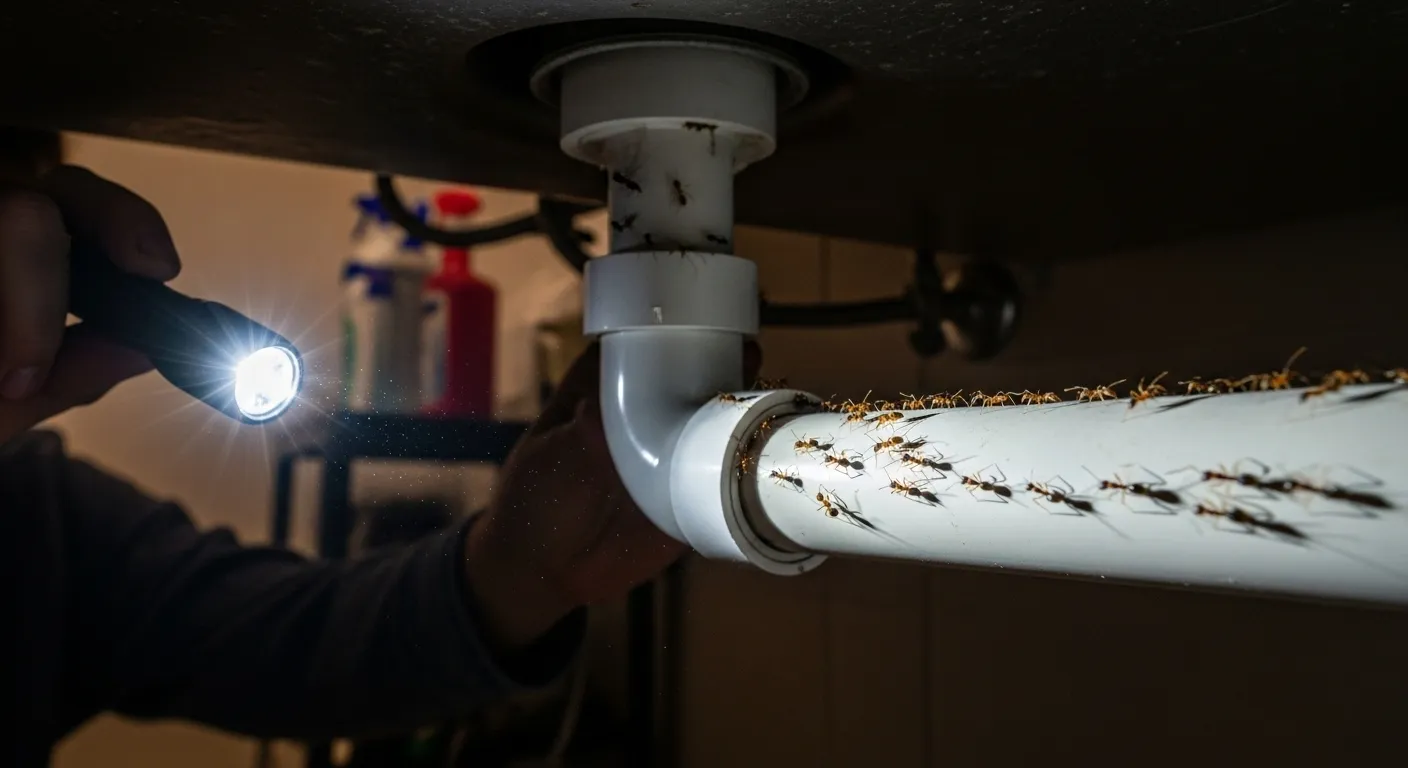
Fortify Your Fortress: Sealing Pest Entry Points
Even the cleanest kitchen can attract a few wandering pests if they have an easy way to get inside. Taking the time to inspect and seal potential entry points is a crucial step in long-term pest control. It’s like locking the doors and windows of your home to keep intruders out. Pests can squeeze through astonishingly small openings, so a thorough inspection is well worth the effort.
Grab a flashlight and get ready to do a little detective work. You’ll be looking for any cracks, gaps, or holes that lead from the outside in, or from wall voids into your kitchen.
Your Kitchen Inspection Checklist
Under the Sink: This is one of the most common entry points. Carefully look at the area where the water pipes and drainpipe come through the wall. There are often oversized holes with gaps around the pipes. Pests can travel along these “pipe highways” from other parts of the building.
Behind and Under Appliances: Pull your refrigerator and stove away from the wall if you can do so safely. Check for any gaps around water lines (for the ice maker) or gas lines. These are often overlooked entry points.
Windows and Doors: Check the weatherstripping around your kitchen door to ensure it forms a tight seal when closed. Look for any cracks in the window frames or tears in the window screens. Even a small hole in a screen is a wide-open door for flies and other flying insects.
Baseboards and Cabinetry: Inspect the line where the floor meets the wall. Look for any cracks or gaps in the baseboards. Also, check inside your cabinets, particularly at the back corners, for any holes or spaces that could lead into the wall.
Vents and Outlets: Examine the covers for exhaust fans and electrical outlets. Make sure they are flush against the wall and that there are no gaps around the edges.
Simple and Safe Sealing Solutions
Once you’ve identified the potential entry points, sealing them is usually a simple and inexpensive task. Here are a few effective materials to use:
Caulk: For small cracks and gaps (less than 1/4 inch wide), a good quality silicone or acrylic caulk is your best friend. Use it to seal gaps around pipes under the sink, along baseboards, and around window frames. It’s flexible, durable, and easy to apply.
Steel Wool: For slightly larger gaps, especially around pipes, steel wool is an excellent choice. Pack it tightly into the opening. Rodents and many insects cannot chew through it. For a more permanent fix, you can pack the hole with steel wool and then seal over it with caulk or expanding foam.
Weatherstripping: If you can see daylight under your kitchen door, it means pests have an easy way in. Apply self-adhesive rubber or foam weatherstripping to the bottom of the door to create a tight seal.
Screen Repair Kits: Small tears in window or door screens can be easily fixed with an adhesive screen patch, which you can find at any hardware store.
By taking an hour to fortify these vulnerable spots, you make it significantly harder for pests to find their way into your kitchen in the first place, putting you one step ahead in the pest control game.

















